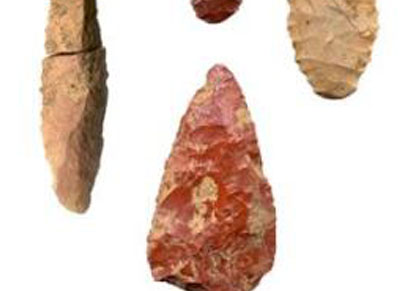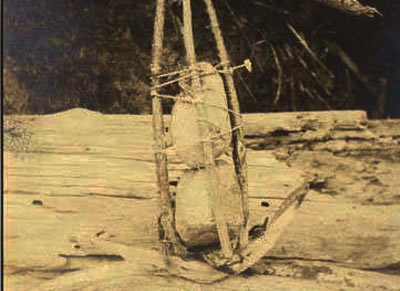RESOURCES
Links to external websites do not constitute endorsement by WSDOT of the linked websites or the opinions, information, products or services contained therein.
N ative communities have lived along Puget Sound and interior waterways for thousands of years. They have evolved over time into the Coast Salish communities that we know today.
Archaeologists have divided the long span of time between the first appearance of material culture evidence and the arrival of non-natives in the historic period into three major eras: the Paleoindian, Archaic and Pacific periods. The earliest physical evidence for humans in the Americas continues to become earlier, with new research continuing to suggest that migration from Asia over the Bering land bridge prior to 12,500 years ago was only a part of the peopling of the Americas, with coastal migrations of people also likely contributing to the earliest known sites.
In the Puget Sound region, the Clovis style of stone artifacts, the earliest widespread technology known in the Americas, is known only from a handful of isolated artifacts as opposed to intact sites. The “Clovis technology” is best known for distinctive projectile points designed for large game hunting.
In the Puget Sound, the era between 12,500 and 6,400 years ago is referred to by archaeologists as the Archaic period. “Olcott complex” sites, which span this period, but may be more likely to occur earlier in the range, are a distinct site type, typified by basalt stone flakes and cores and lanceolate shaped points. The relationship between these sites and the earlier Clovis technology is subject to continuing archaeological research. Other Archaic sites in the region are known, but they typically tend to lack the stratification (distinct layers and deposits) that are critical to providing archaeological context and interpretation. In general the Archaic sites’ patterns across the land show people living upland near rivers, and using both land and riverine resources for their subsistence.
After 6,400 years ago, Ames and Maschner divide the Pacific Period into Early, Middle and Late phases. The early phase, lasting until approximately 3,800 years ago, saw sea level stabilization and the development of estuary systems like today that support salmon. Shell midden sites begin to appear in the archaeological record, reflecting deposition of shellfish remains over time, and overall, sites from this period yield artifacts requiring more time investment to produce, such as ground stone and more artistic, less purely functional artifacts such as gaming pieces, labrets, and blanket pins. Excavations at the West Point site (just north of the mouth of Elliott Bay) are some of the most detailed for this period; other components of the site evidence later periods of occupation.
Between 3,800 and 1,500 years ago, the Middle Pacific archaeological phase is marked by a number of distinct cultural traits that recognizably persisted among Pacific Northwest cultures that existed when Europeans first sailed into Puget Sound. These included permanent coastal villages with large wooden plank houses, social status differentiation, and art similar to ethnographically documented styles. Occasionally sites from this period are found in a waterlogged condition, which preserves the complex basketry, bark, wood, and other organic artifacts which would normally not survive the years. Although people in this period used a broad spectrum of resources for subsistence, there is a notable emphasis on fishing, including salmon and related fish, as well as shellfish, as inferred from the bones, shells, and fishing-related artifacts.
The Late Pacific period, from around 1500 years ago to 225 years ago, was the period when native population numbers were at their maximum. At a very general level, cultural patterns were stable, although this generalization over such a number of years certainly masks the day-to-day challenges and smaller events that shaped daily life in the past. Salmon remained an important staple subsistence resource, and there are also indications of regional conflict between groups.
It is important to note that native peoples have a complicated relationship with archaeology, and that values are often conflicted when sites are uncovered either accidentally or by design. The Tulalip Tribes state on the website for the Hibulb Cultural Center: “It is not part of our cultural values to uncover our ancestral remains, personal items or ancient village sites”. For many tribal people, the story of the past is told through tradition and information passed from those who lived in earlier times. Archaeological information and practice sometimes struggle to coexist easily with tribal ways of thought. Early exploration and encroachment by outsiders was sporadic in the 16th and 17th centuries, and British naval officer George Vancouver began exploring Puget Sound in the 18th century. While many turning points occurred prior to this time, it was the American settlement of the region that triggered the greatest and most lasting changes for the original inhabitants of Puget Sound and Lake Washington.


